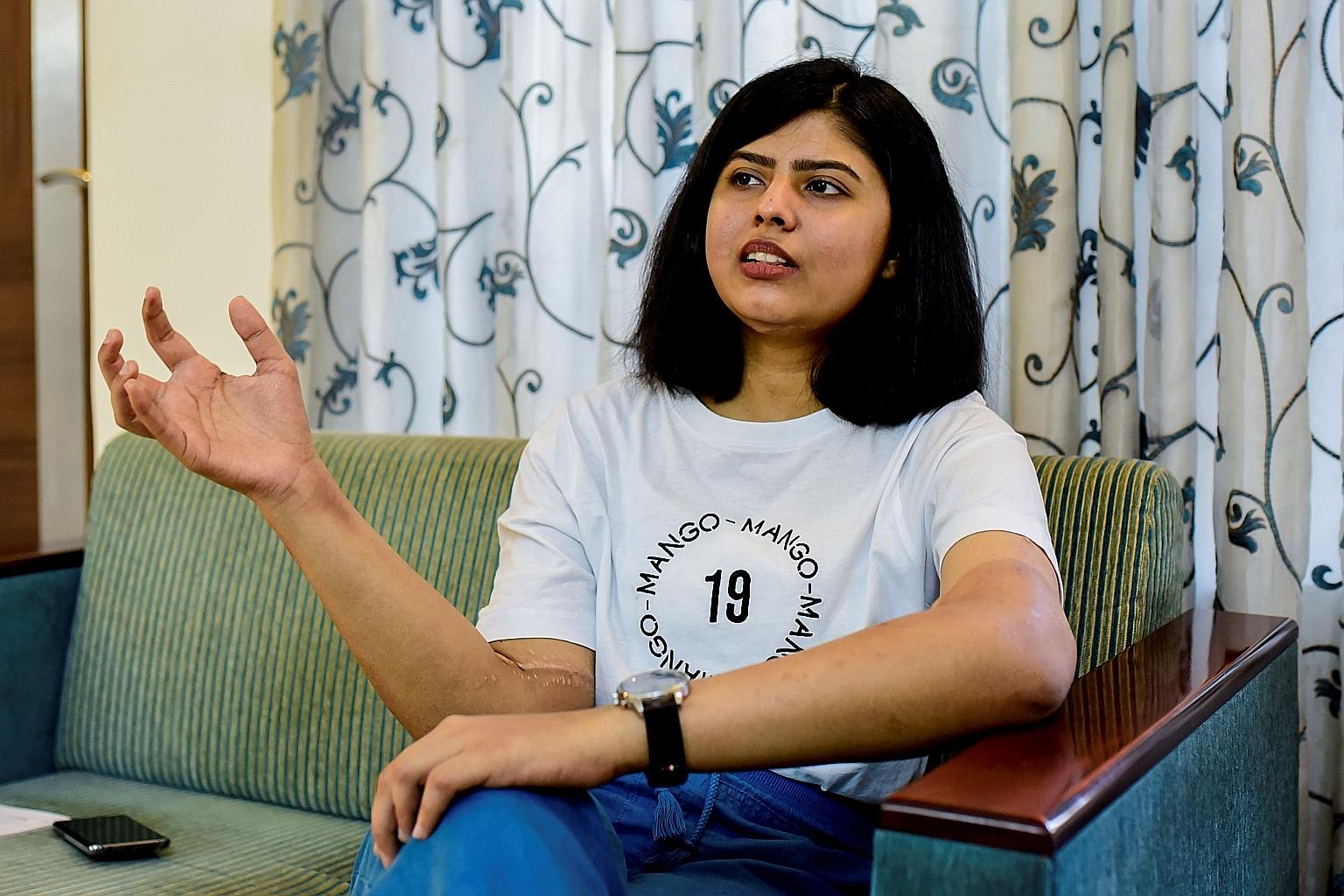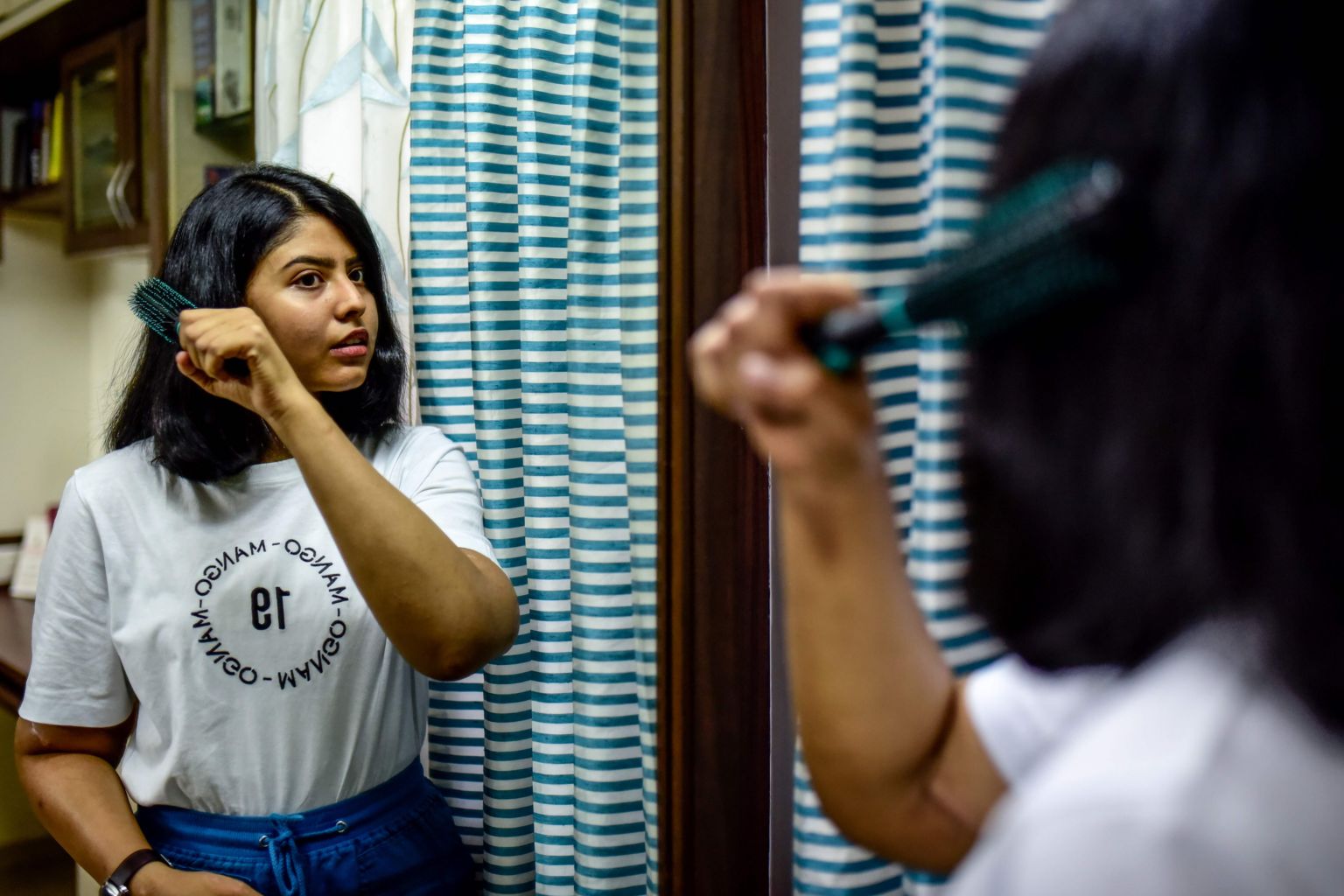Indian woman's transplanted hands change colour to match her skin tone
Sign up now: Get insights on Asia's fast-moving developments

In 2016, Ms Shreya Siddanagowda was involved in a bus accident that crushed both her arms, which had to be amputated.
PHOTO: AGENCE FRANCE-PRESSE
Follow topic:
NEW DELHI • When amputee Shreya Siddanagowda was offered new hands, the Indian student did not hesitate - even though they were big, dark and hairy, and once belonged to a man.
Now, her new hands have not only become more slender but also changed colour to match her skin tone, mystifying the doctors who carried out the 13-hour transplant.
"The donor was a tall man with big spindly fingers," said Ms Siddanagowda's mother, Suma.
"Now nobody can make out that they are a man's hands... She has even started wearing jewellery and nail varnish."
In 2016, Ms Siddanagowda, then 18, was involved in a bus accident that crushed both her arms.
A delay in getting first aid meant that both her arms had to be amputated below the elbow.
Only 200 successful hand transplants have taken place worldwide - including nine in India - since the first in the United States in 1999.
India's first such transplant was conducted in 2015 at the Amrita Institute of Medical Science in Kerala, where Ms Siddanagowda's family took her.
The biggest problem was finding a donor. For cultural reasons, Indian families are often reluctant for the hands of their loved ones to be made available after their death.
"Usually you have to wait a long time," said Dr Subramania Iyer, a member of a team of doctors who operated on Ms Siddanagowda.
As a result, those seeking a transplant "are so desperate that they don't mind if the hands are from a different gender", said Dr Iyer, a specialist in reconstructive surgery.

Ms Shreya Siddanagowder brushing her hair in a bathroom at her home in Pune on March 7, 2020, more than two years after her transplant surgery.
PHOTO: AFP
Eventually, the hospital obtained a pair of hands from a man in August 2017. Ms Siddanagowda and her family accepted.
The donor's hands were first attached by the bones before the tendons, blood vessels and skin were painstakingly stitched together.
After the transplant, she had to undergo more than a year of physiotherapy for her body and brain to get used to the new hands and obtain mobility and sensation.
Dr Iyer said the colour of Ms Siddanagowda's hands quickly began to show "a lot of change".
"It could be because of MSH... a brain-controlled hormone that stimulates melanin production. We are wondering if MSH levels can really influence the skin colour."
Dr Shehla Agarwal, a leading dermatologist in New Delhi, said the absence of testosterone was the reason that the hands became less hairy, and agreed that other hormonal changes might explain the change in colour. But she also cited other possible factors.
"The donor male may have been exposed to more sunlight and physical activity compared with the woman," Dr Agarwal said.
Ms Siddanagowda, on her part, is loving the transformation, and so are her doctors.
"The best moment was when she sent me a handwritten note on my birthday. I could not have asked for a better birthday gift," said Dr Iyer.
AGENCE FRANCE-PRESSE

